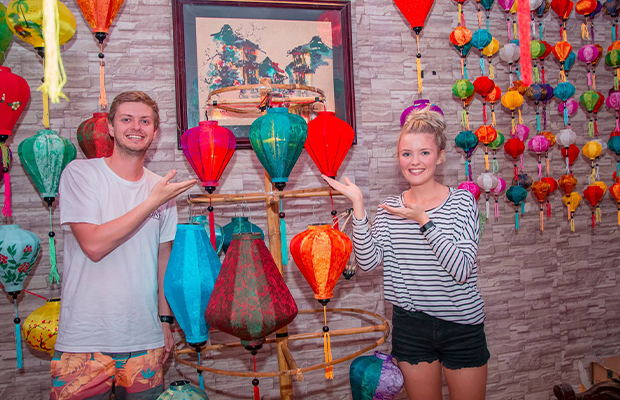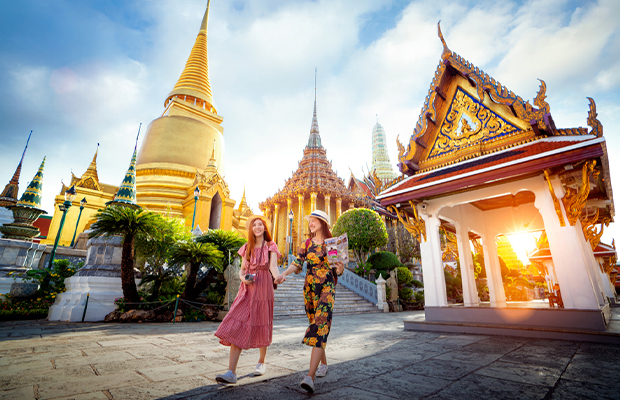Easy Guide on Best Time to Visit Angkor Wat: Quick Tips & Takeaways
The best time to visit Angkor Wat is the dry season. It lasts from November to March. The weather is cooler during these months, and the skies stay clear. Temple walks also feel more comfortable. You don’t have to deal with heavy rain or extreme heat. Sunrise and sunset views are also at their best, drawing visitors from all over the world. It does get crowded. But the stable climate makes this period the most rewarding for a first visit.
In this article, we will explain in detail why these months stand out, how the other seasons compare, and the best time of day to visit Angkor Wat for the best experience.
![]() Seasons of the Year in Siem Reap: Dry, Hot, and Rainy
Seasons of the Year in Siem Reap: Dry, Hot, and Rainy
![]() Best Month to Visit Angkor Wat: November to March
Best Month to Visit Angkor Wat: November to March
![]() Best Time of Day to Visit Angkor Wat: Sunrise, Morning, and Sunset
Best Time of Day to Visit Angkor Wat: Sunrise, Morning, and Sunset
![]() Photography Moments: Capture Angkor Wat Temple at Its Best
Photography Moments: Capture Angkor Wat Temple at Its Best
![]() Festivals with Crowds: Enjoy Traditional Celebrations at Angkor Wat
Festivals with Crowds: Enjoy Traditional Celebrations at Angkor Wat
![]() Weekend Rush? 3 Smart Ways to Beat the Crowd
Weekend Rush? 3 Smart Ways to Beat the Crowd
![]() Rainy Season Beauty: Should You Go or Skip?
Rainy Season Beauty: Should You Go or Skip?
![]() Practical Essentials for Angkor Wat Visit at a Glance
Practical Essentials for Angkor Wat Visit at a Glance
![]() Suggested Angkor Wat Tour Itineraries by Season & Timing
Suggested Angkor Wat Tour Itineraries by Season & Timing
Seasons of the Year in Siem Reap: Dry, Hot, and Rainy
Siem Reap has three clear seasons: Dry, Hot, and Rainy. And each season has its own feel. November to March is the dry season. During this time, the days are cooler and nicer. But the temples get a lot of visitors, and hotel prices go up. This is the best travel time to Cambodia for first-timers or families who want a smooth trip to Angkor Wat.
Average Temperatures and Climate Features of Each Month for the Angkor Wat
|
Season |
Avg. Temp (°C) |
Rainfall (mm/month) |
Humidity |
Crowd Level |
Travel Costs |
Light for Photos |
|
Dry (Nov–Mar) |
20–30 |
10–30 |
Low–Mid |
High |
High (peak) |
Golden light |
|
Hot (Apr–May) |
30–38 |
<10 |
Low |
Medium |
Mid-range |
Harsh light |
|
Rainy (Jun–Oct) |
25–33 |
<10 |
High |
Low |
Lowest |
After-rain glow |
April and May are the hottest times of the year. The heat can be intense, but the crowds start to thin out. You can also find better hotel deals. If you don’t mind the heat, this season can still work in your favor.
The rainy season is from June to October. Showers are common, but they usually don’t last all day. The countryside is green and fresh, and makes for great photos. Prices drop during this time as well. For travelers who want peace, this can be the best time to visit Angkor Wat.
Temps are between 25-35°C all year round. December and January are the coldest months, but they are still warm compared to many places. If you’re planning a trip to Cambodia, the dry season is usually the best time to go.
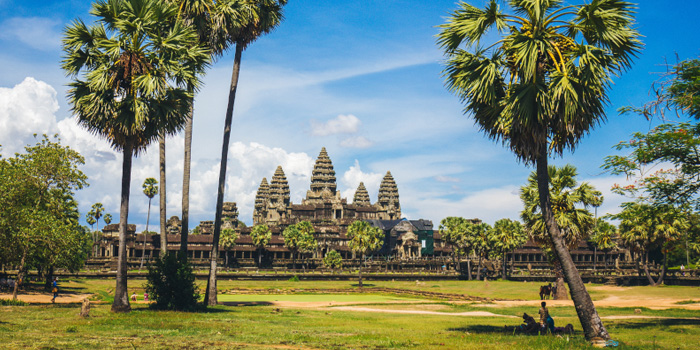
December is one of the best months to visit Cambodia.
Best Month to Visit Angkor Wat: November to March
The cool, dry season is the best time to have an Angkor Wat tour. November is the best time to visit because the weather is nice, the skies are clear, and the crowds are small as peak season starts.
December has the best weather, with cool mornings that are great for watching the sunrise. The number of tourists goes up, but it's still manageable.
January is the coldest month of the year, so you can explore the temple all day without getting too hot. But this is also the month with the most work.
February has great weather and fewer people than in January. March starts to warm up, but the weather is still great before the hot season starts.
Siem Reap Weather: November – March
|
Month |
Avg. Temp (°C) |
Avg. Temp (°F) |
Rainy Days (avg.) |
|
November |
24–30°C |
75–86°F |
4–6 days |
|
December |
22–29°C |
72–84°F |
1–2 days |
|
January |
21–29°C |
70–84°F |
0–1 day |
|
February |
22–32°C |
72–90°F |
1–2 days |
|
March |
25–34°C |
77–93°F |
3–4 days |
Best Time of Day to Visit Angkor Wat: Sunrise, Morning, and Sunset
The best time of day to visit Angkor Wat is early morning. Sunrise over the temple, often watched from the lotus pond, is breathtaking. Getting there before 5 AM helps secure a good spot.
After Angkor Wat sunrise, the morning light creates perfect conditions for detailed temple photography. The crowds thin out around 9:00 AM as tour groups move on. This gives you peaceful moments to explore the intricate carvings.
Another wonderful time to visit is at sunset. The hilltop of Phnom Bakheng offers breathtaking views of the temple complex at sunset. Start early because the climb takes around 15 minutes. On the other hand, at sunset, the moat surrounding Angkor Wat produces stunning reflections.
Steer clear of midday visits whenever you can. Unflattering shadows are cast by the harsh overhead sun, and the heat becomes unbearable. If you plan to visit Angkor Wat at noon, pay attention to the interior hallways and areas with shade.
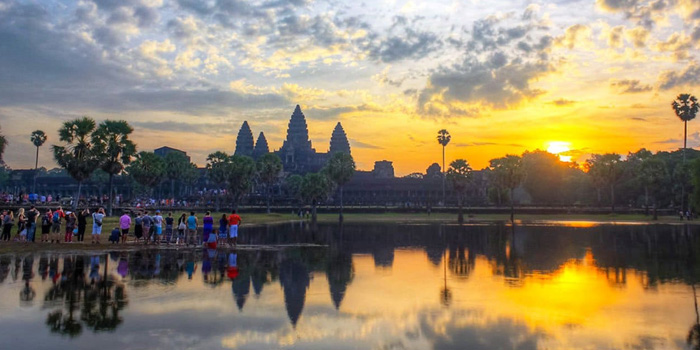
The sunrise of Angkor Wat is one of best time of the day to visit.
Photography Moments: Capture Angkor Wat Temple at Its Best
Serious photographers should plan around the spring equinox in March. The sun is perfectly aligned at this moment, rising directly behind the main tower of Angkor Wat. Photographers from all over the world wait for this moment for the whole year to visit Angkor Wat at its best, because it only occurs a few times a year.
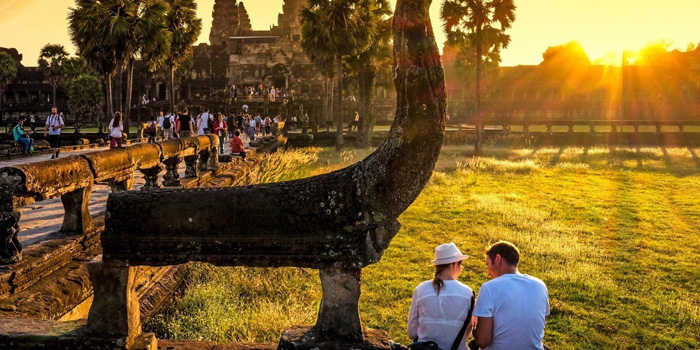
Photographers can capture Sunrise at Angkor Wat during the vernal equinox.
The rainy season offers some fantastic photo ops. Following rain, puddles create mirror-like reflections, and dramatic clouds frame the temple. The lush green plants contrast beautifully with the old gray stones.
To get pictures without people, try a variety of angles. Beautiful views can be found on the temple's north side, away from the usual tourist crowds. The side light in the early morning is ideal for highlighting the temple's fine details from this perspective.
For travelers who prefer expert planning, we offer customized Southeast Asia tour itineraries that account for Cambodia’s festival calendar, crowd patterns, and seasonal changes. Our team can arrange temple visits at the right times of day, secure accommodations well in advance, and include cultural experiences that align with local celebrations.
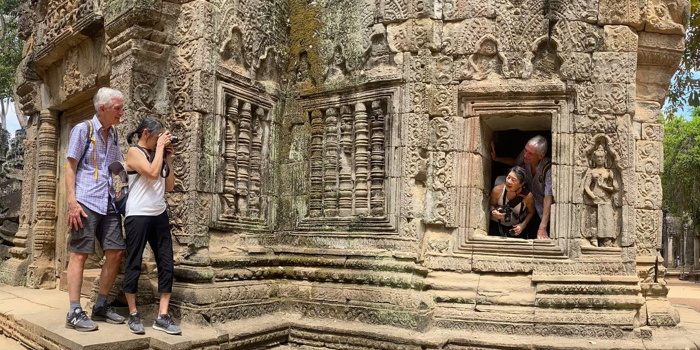
Our guests try a variety of angles take an amazing photo in Angkor Wat.
Festivals with Crowds: Enjoy Traditional Celebrations at Angkor Wat
Cambodia's major festivals significantly impact the best time to go to Angkor Wat. The Water Festival in November brings massive crowds to Siem Reap. Hotels book up months in advance, and temple areas become extremely busy.
Khmer New Year in April coincides with the hot season but offers incredible cultural experiences. Local families visit the temples in traditional dress, creating vibrant photo opportunities. However, expect heavy crowds and higher accommodation prices.
Pchum Ben Festival in September falls during the rainy season. This Buddhist celebration sees fewer international tourists but many local visitors. The combination of festival activities and occasional rain showers creates a unique atmosphere.
If your trip overlaps with major holidays, book accommodations early and expect delays visiting Siem Reap. Consider extending your stay to allow for flexible temple visits around the busiest festival days.
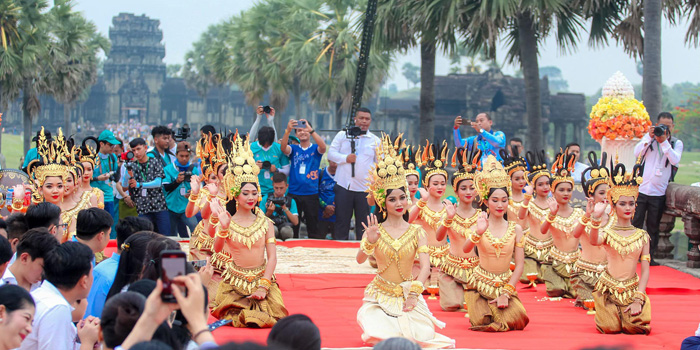
Tourists can enjoy the lively scene of Angkor Wat during the Cambodian New Year.
Weekend Rush? 3 Smart Ways to Beat the Crowd
Weekends bring more people, especially during the busy season. Instead of the main Angkor Wat circuit, start your exploration with the outer temples. The main temple is busier in the morning than Ta Prohm and Bayon.
Get to the temple complex as soon as you can and stay there until late. Most tour groups have strict schedules and leave by mid-afternoon. Take a break in the middle of the day to get away from the heat and come back when the crowds are smaller.
Instead of a single-day ticket, buy a 3-day or 7-day Angkor Pass. You can avoid busy times and spread your exploration over several days in Angkor Wat because of this flexibility. You can go during less busy times and go back to your favorite places.
Rainy Season Beauty: Should You Go or Skip?
Many travelers wonder if the best time to go excludes the rainy season entirely. The answer depends on your priorities and flexibility. Rain doesn't fall continuously - most showers are intense but brief afternoon thunderstorms.
The advantages include dramatically lower accommodation costs, fewer crowds, and incredibly lush landscapes. The temples look stunning, surrounded by vibrant green vegetation. Photography opportunities abound with dramatic storm clouds and mirror-like reflections.
The disadvantages involve humidity, muddy pathways, and potential transportation delays. Some remote temples become difficult to access during heavy rain periods. However, the main temple complex remains accessible year-round.
Pack quick-dry clothing, waterproof gear, and flexible daily schedules when planning a Cambodia trip during the rainy season. Many rainy season visitors fall in love with the dramatic atmosphere and peaceful exploration opportunities.
Practical Essentials for Angkor Wat Visit at a Glance
The Angkor Pass comes in 1-day ($37), 3-day ($62), and 7-day ($72) options. Choose based on your available time and energy levels. The 3-day pass offers the best value for most visitors, allowing time to see major temples without rushing.
Temple gates open at 5:00 AM for sunrise viewing, with regular hours starting at 7:30 AM. Bring valid photo identification for ticket purchase. Children under 12 enter free with proof of age.
For the Angkor Wat dress code, you need to dress respectfully with covered shoulders and knees required for temple entry. Comfortable walking shoes are essential given the uneven stone surfaces and extensive walking distances. Bring sun protection, insect repellent, and plenty of water.
Transportation options to get to Angkor Wat include tuk-tuks ($15-20/day), electric buggies ($30-35/day), and bicycles ($2-5/day). Tuk-tuks offer shade and storage but limited mobility. Bicycles provide flexibility but require good fitness levels. Electric buggies split the difference with comfort and environmental friendliness.
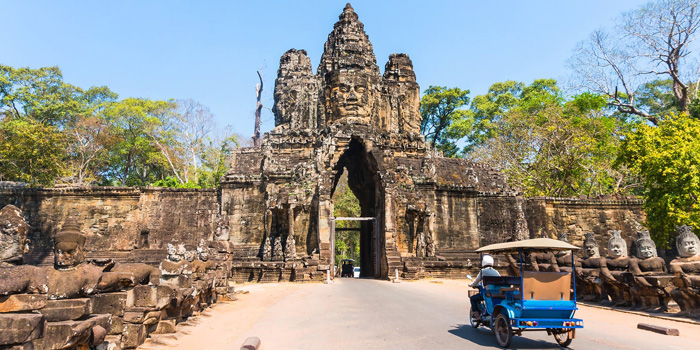
Tuk-tuks is one of best ways to get from Siem Reap downtown to Angkor Wat.
Suggested Angkor Wat Tour Itineraries by Season & Timing
How many days you should spend at Angkor Wat depends on both your interests and the season. However, for many travelers, a 1-day or 3-day itinerary works best. A single day covers the highlights – sunrise at Angkor Wat, the Small Circuit with Bayon and Ta Prohm, and sunset at Phnom Bakheng or the temple moat. A 3-day plan is the classic way to explore in depth, adding Angkor Thom, Banteay Srei, Beng Mealea, and time for quieter corners.
During the dry season (November to March), many visitors stay longer, with 5-day or even 7-day tours offering the chance to combine major temples with lesser-known sites and photography at different times of day. The cooler weather makes extended exploration more enjoyable.
In the rainy season (June to October), mornings are usually clear, so it’s best to visit Angkor Wat and other temples early. Afternoons can be spent at indoor sites like the Landmine Museum or exploring Tonle Sap Lake and its floating villages, which are at their most impressive when water levels rise.
Whether you choose one, three, or more days, tailoring your schedule to the season will make your Angkor Wat tour more rewarding and balanced.
FAQ: Common Traveler Questions on Angkor Wat Visit
Can I still see the sunrise in the rainy season?
Yes, many mornings remain clear even during rainy months. Afternoon storms are more common than morning rain. Check weather forecasts and have backup plans ready.
Is it possible to take great photos on weekends?
Absolutely. Wake up extra early, explore alternative viewpoints, and focus on detailed shots instead of wide temple views. Weekend crowds actually thin out by late afternoon.
Are tripods allowed? Can I fly a drone?
Tripods are permitted for photography, but drones are strictly prohibited throughout the temple complex. Respect other photographers when using tripods in popular spots.
Can I buy tickets on the same day? What's the best entry time?
Same-day ticket purchases are possible at the main entrance, but arrive early during peak season. For sunrise viewing, enter by 5:00 AM. For general exploration, 7:30 AM provides good lighting with manageable crowds.
Conclusion
The best time to visit Angkor Wat depends on what you value most. November to March is the best time to go because the weather is cool and travel is easy. The hot and rainy seasons can be good times to go because there are fewer people and prices are lower. With good timing, the temples of Angkor leave unforgettable memories, whether you come for photos, history, or the unique spirit of Cambodia.
We at Indochina design custom Angkor Wat tour itineraries so you can enjoy the temples at your own pace. With us handling the details, you can focus on exploring and capturing the beauty of Angkor Wat. Contact us to start planning your trip today.
More Related Cambodia Travel Planning Articles
Most Popular Cambodia Tour Packages
-
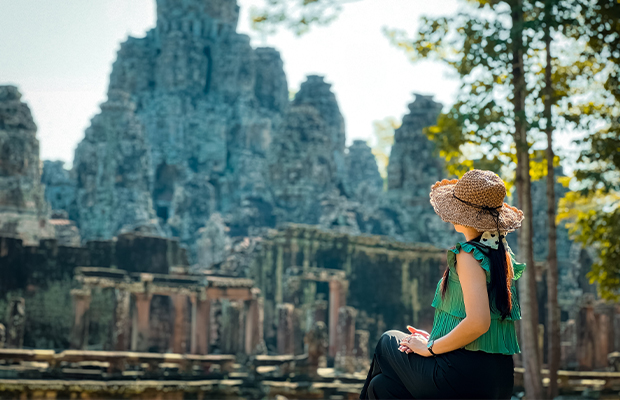
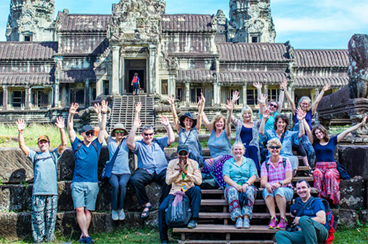 4 Days to Explore Cambodia’s Cultural Heart: Siem Reap
4 Days to Explore Cambodia’s Cultural Heart: Siem ReapSiem Reap
Take this 4-day trip to uncover the magic of Siem Reap, Cambodia. Join us on a journey through its essence, discovering ancie ...
-
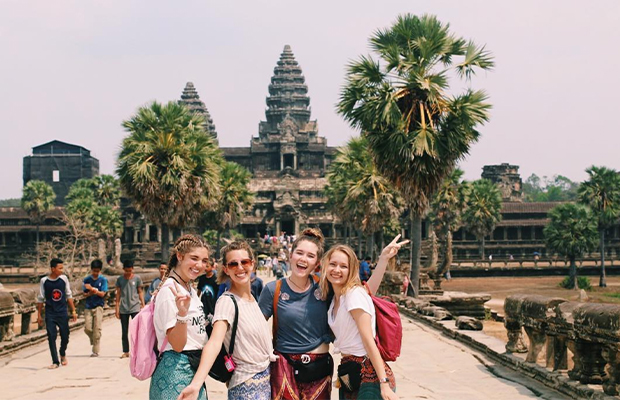
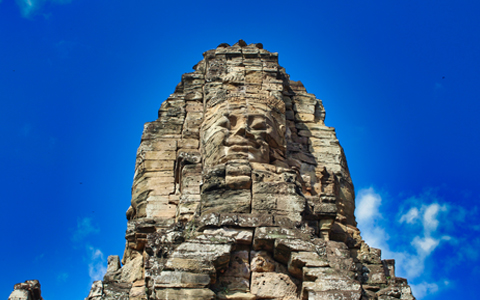 6 Days Best of Cambodia Tour Package
6 Days Best of Cambodia Tour PackageSiem Reap - Phnom Penh
Get set for the 6-day best of Cambodia’s wonders! We’ll take you on a journey through Cambodia’s stunning ...
-
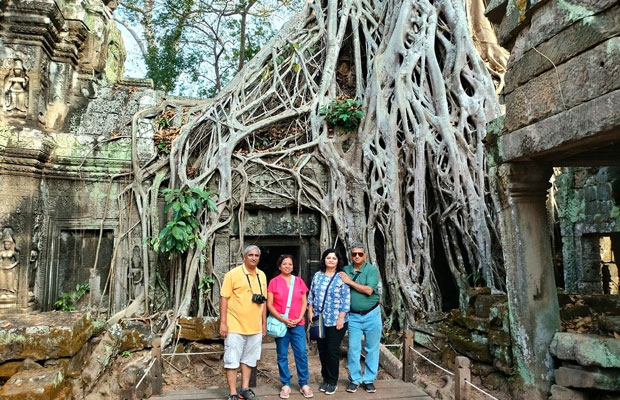
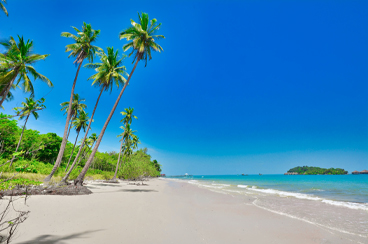 7 Days Cambodia Mysteries Discovery Tour with Beach Relaxing
7 Days Cambodia Mysteries Discovery Tour with Beach RelaxingSiem Reap - Koh Rong Island
Take this 7-day adventure in Cambodia! Discover the mysteries of Siem Reap's ancient temples and relax on the paradise island ...
-
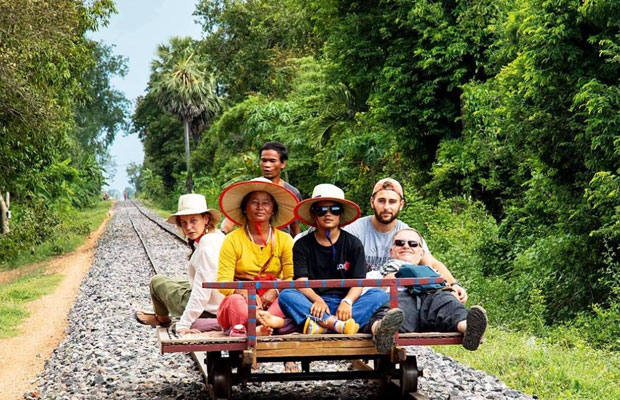
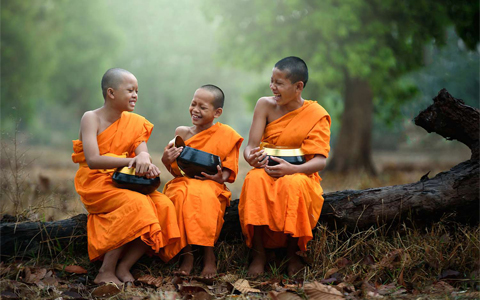 10 Days Cambodian Panoramic Overland Tour
10 Days Cambodian Panoramic Overland TourSiem Reap - Battambang - Phnom Penh - Sihanoukville - Koh Rong Island
Explore Cambodia's beauty in just 10 days with this exciting itinerary. Start in Siem Reap, home to the stunning Angkor templ ...
Ask Us A Question For Free

.gif)
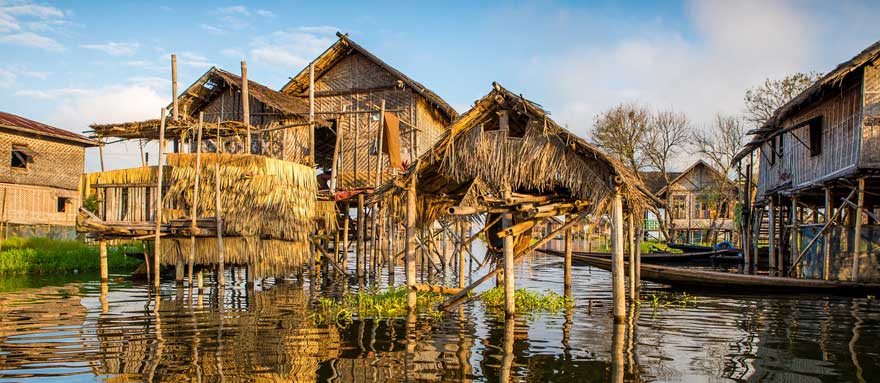
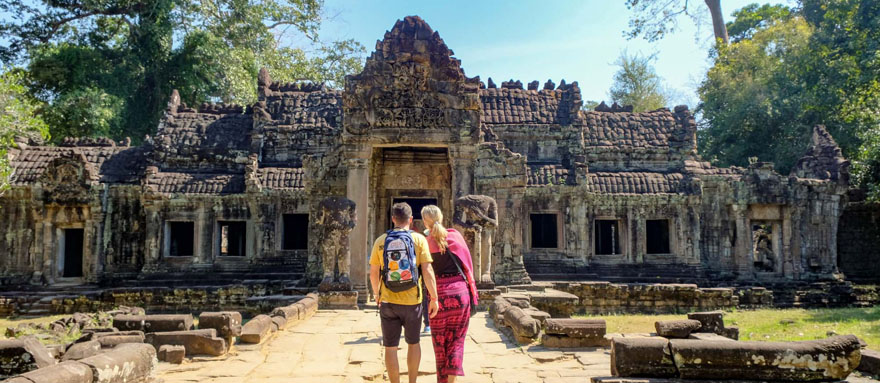

.jpg)
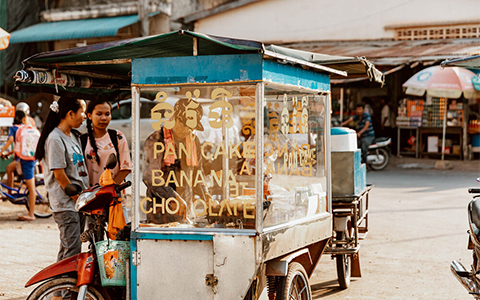
.jpg)

.jpg)
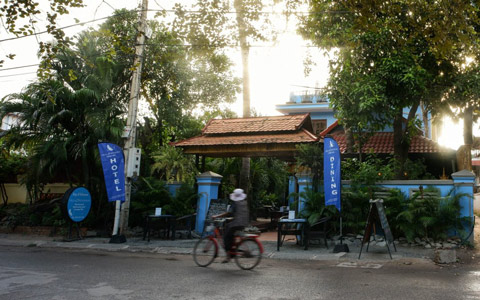
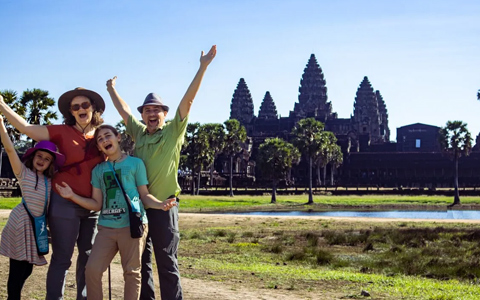
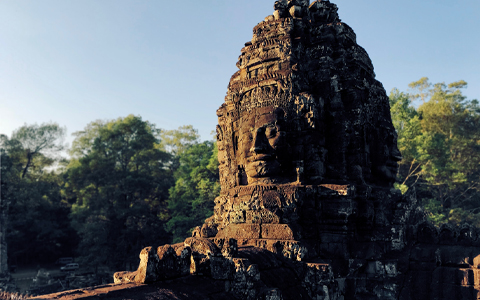
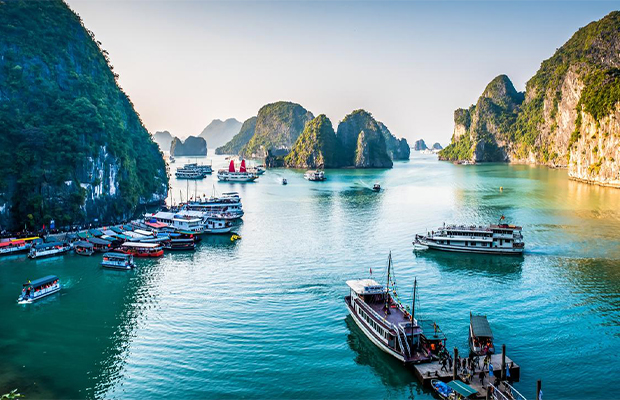
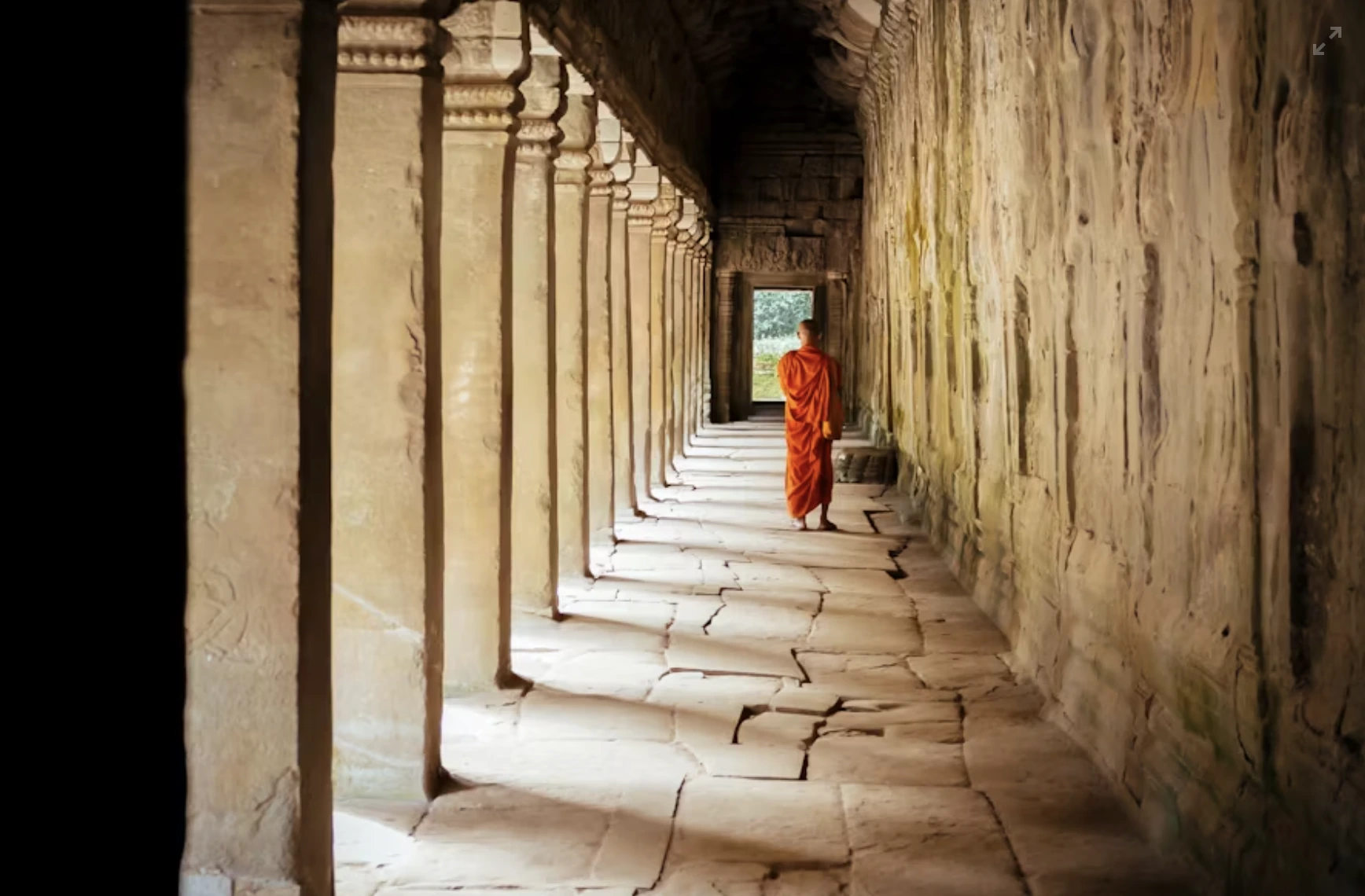
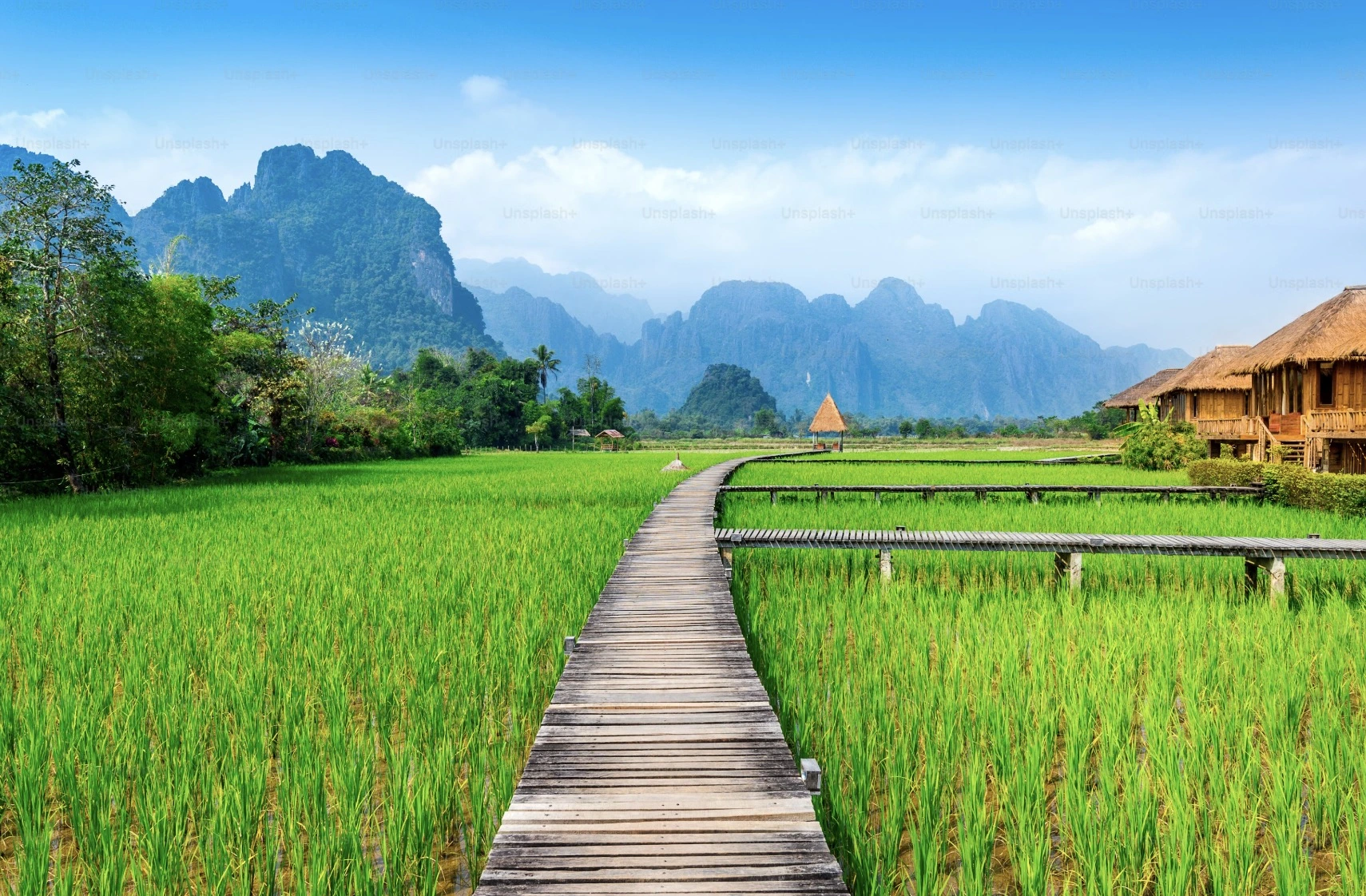
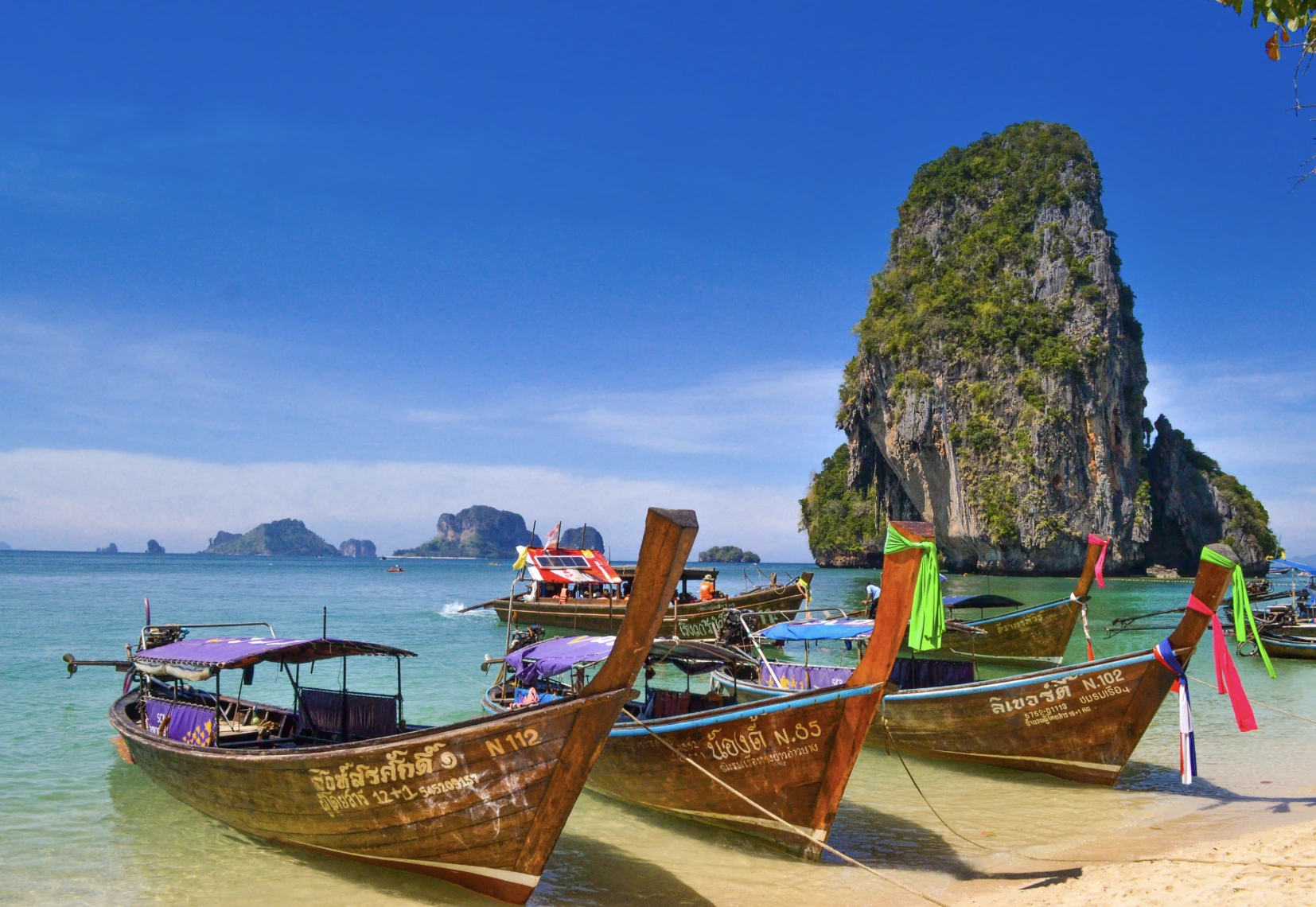
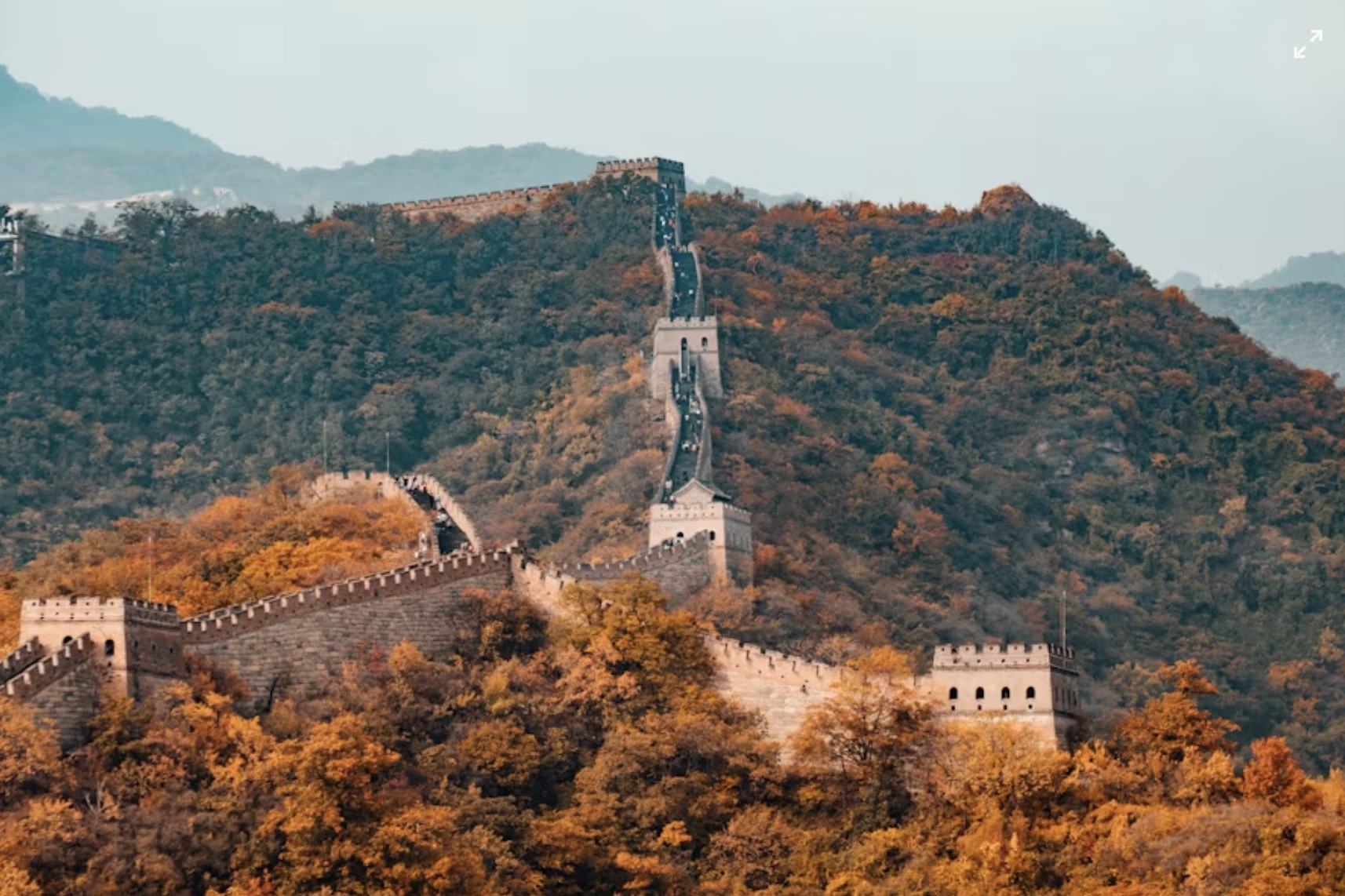


















.jpg)
